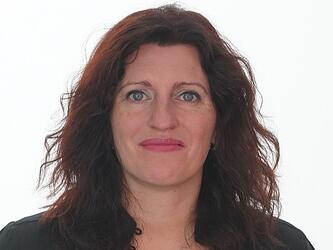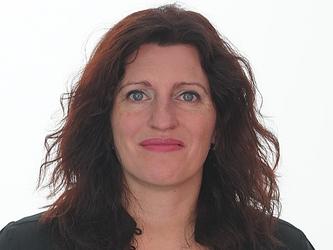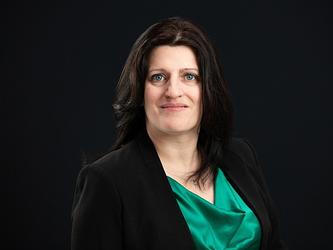Working on wellbeing: How Holland & Barrett focuses on what customers want
When I sit down with Holland & Barrett’s director of customer experience and insight, Georgina White, she is 18 months into the role. In spring 2022, when she joined the health and wellness retail business from BT, the insight team had five members. As of November 2023, it had 23.
Set up to both guide core business performance and to drive the strategy and transformation of the business, the team is agile, covering research, market intelligence and customer analytics.
“We’re pretty young as a team – there’s a huge amount of transformation to be done in terms of capability,” says White. This includes building a new market insight capability – something the business hasn’t had in the past – and establishing how to better leverage its own customer data, as well as bolstering customer experience, implementing how it measures and improves marketing effectiveness, and assessing what the company’s strategy means from a customer perspective.
On top of this, among White’s key areas of focus for the next financial year is the need to ensure the team is driving customer performance; making sure customers are embedded into overall strategic priorities; extracting the value out of capabilities including customer data; and establishing an inclusive, supportive environment for the team – one that helps them act as partners to the business.
“That’s a pretty broad list. Arguably, it’s probably similar for a lot of insights teams,” White says of the four priorities, but adds: “The bit that makes us perhaps a little bit different is where we are in our maturity, as such a new team, and the fact we’re probably trying to do it all at once. There are lots of plates spinning because we’re trying to become a source of competitive advantage as quickly as we possibly can, and that means a lot of things that we are building from scratch.”
A question of cost
Not long after joining Holland & Barrett, White was faced with a challenge. At the end of 2021, the business had changed its pricing and promotional strategy. At the time, there was a small insight team, so the decision was made without robust testing.
“Fast-forward into 2022 and there was a belief that sales had been impacted by that decision,” explains White. “So, as a team, we rallied round to figure out what was going on, what was driving our pricing and promotional changes and what needed to happen. And, as in all good stories, we had a very short period of time to do it. I think we had two weeks.”
White’s division wanted to understand the role of promotions and pricing for customers – what was appealing for them, and examine what, if any, impact the previous changes had made.
“Inside the organisation, there was a lot of noise as to what action should be taken and we wanted to cut through that noise,” says White.
The team carried out an evaluation that involved reviewing existing data – including market intelligence and owned customer data – as well as commissioning primary research and brand tracking. It also examined the potential impact of the cost of living, carried out a monadic test over a two-week period – via one of its agency partners – and surveyed customers no longer shopping with Holland & Barrett. As a result of the evaluation, White says the team identified that the company did need to change its promotional strategy. They then modelled the change before taking the insight to the senior leadership team, to help them understand the impact.
The insight team recommended a range of new mechanics that the business has implemented, and that have increased performance “quite significantly”, according to White. They also busted some myths: “We killed some of the ideas that were running around the business that weren’t customer-led. We were able to stop an incorrect decision being made.”
In addition to these recommendations, the team found an opportunity for a new range of own-label value vitamins, which was launched in December 2022 and highlighted the company’s response to the cost-of-living crisis. The move also contributed to an improvement in price perceptions and sales performance, according to White.
“What started as a relatively simple but fairly contentious, ‘What’s the impact and what should our promotional strategy be?’ came back to a customer-led range of promotional mechanics that were deployed successfully. It led to development of a new product range and having more clarity on the strategic problems and opportunities facing our customers, and it resulted in the business getting behind what was a simple piece of work of what insight could do and how it could work successfully,” she says.
Lastly, White says the research also showed an opportunity to improve how Holland & Barrett communicates its value as well as the efficacy and relevance of products – an insight that the business took forward in terms of its marketing. “What our brand stands for and how our marketing operates now is very different to how it’s been in the past,” says White.
Examples of this are the recent ‘Every Menopause Matters’ campaign, which featured women talking about what they had lost because of the menopause, and its ‘Move Well to Live Well’ campaign. Holland & Barrett also relaunched its food range with more than 500 new stock keeping units (SKUs) in September 2023.
Understanding needs
When it comes to methodologies, White prefers to figure out the right approach on a case-by-case basis – but she emphasises the importance of the retailer’s research being inclusive. This means leveraging MRS best-practice guidelines on inclusive research and working closely with agency partners.
She says the aim is “deliberately making it part of our strategy”, but adds that this is a work in progress. For example, White is looking at whether the team should be doing more work for people with certain needs, and what inclusive research looks like when it’s ‘business as usual’ rather than an ad hoc project.
The emphasis on inclusion is important from a strategic perspective, she notes. “Our purpose as a business is how we can be a trusted partner to help our customers reach their health and wellness goals. We need to understand what that means across different parts of society, different needs, different segments etc., and we therefore must make sure we are inclusive in that.”
This includes identifying simple but important insights on where societal needs are not met, for example, women from some ethnicities engaging less in conversations around menopause.
For the menopause campaign (see panel, below), Holland & Barrett translated its advert and offered access to its advisers in multiple languages. “Enabling people to have the conversation with somebody that understood them; as an insight, that was very clear as the opportunity. Then the marketing team and the business team took that through into the execution in our operation.
“It’s an example of where we’ve identified – based on insight we’d already leveraged, either from working with agencies or from our own datasets – a gap in the market, and where the business really got behind what this could mean and executed it.”
PROFILE
Georgina White is director of customer experience and insight at Holland & Barrett, chair of the MRS Senior Client Council and a member of the MRS Diversity, Equality & Inclusion Council.
● 2018-2022: Group insight director, BT
● 2017-2018: Director-marketing, customer and insights, Centrica
● 2014-2017: Head of insight, British Gas
● 2012-2014: Head of consumer insight, British Gas
● 2010-2012: Head of consumer insight, Capital One
Prioritising Partnerships
Another challenge for White is the team’s relationship with agencies. “I’ve always passionately believed, and still do believe, that agencies are strategic partners. They should feel like an extension of the team. The reality is, in the past 18 months, we’ve not treated them like that.
“So, it’s something that hurts me personally, knowing that. There are good reasons as to what we needed to do, but ensuring we improve those relationships is really important.”
White is also focused on tackling the age-old challenge of ensuring staff have enough time to work on differing projects, whether it’s a short-term tactical piece of insight or more strategic work.
“One of the things I love about what we do, but is also a real challenge, is that on a given day, you can be going into meetings that are talking about trading right now, to the next quarter, to the next six months, to the next year, and going from current trading through to strategy of what we are delivering in market in 18 months’ time or what we need to be doing in three to five years’ time. As an insight team, you need to be able to adjust to that.”
White continues: “This is an insight team that’s driving everything, from our strategy to supporting how we optimise campaigns or activity, and everything in between – that’s a lot for people to be juggling with. It brings brilliant opportunity, but you don’t do your best thinking when you’re going from right now to longer term and we’ve got to make sure we give people the time that they need on the correct things.”
White has hired a mixture of ex-agency staff and former client-side insights managers but has also placed a heavy focus on developing colleagues internally. For example, some of the team are former contact centre employees, “which helps on the customer experience side”, she says.
The team takes a “business partnering approach” to working with stakeholders internally, but White appreciates that the skills needed to be a good researcher are not necessarily the same as having the business nous needed to drive influence within an organisation. A framework used by the team identifies the different aspects needed to be commercially successful and where more skills are needed: credible expertise, commercial savviness, clear communicator, decision influencer, and inspiring leadership, with the latter relating to the ability to see a bigger picture and balance the short and long term.
White says: “A lot of insight teams or individuals stop at credible expertise: ‘I am the right person to do this detailed methodology’ – and that’s hugely important, I’m not saying it’s not, but a lot of our focus, as a team, is on all the other areas. To have that impact on the business, to be a leader, it’s got to start with asking whether you really understand what’s going to shift the dial for the business, what your stakeholders are going through, and what makes money.”
These are broad questions beyond Holland & Barrett, and White feels that the industry in general still has work to do to improve how research engages with the wider business challenge.
“As a sector, we have got to improve our commercial savviness and our commercial engagement,” says White. “It is amazing how few insight professionals put the outcome of their work on their CV: ‘I drove up business results by 20%’, for example. Instead, it’s: ‘I do lots of qual, quant, methodologies’, which is hugely important, but what are you doing because of it?
“As a sector and as individuals, we’ve got to do much better at telling that story. For me, all this stuff about ‘getting a seat at the table’ – you’re not going to do it unless you’re demonstrating to the business, agitating, pushing and being clear on how you’re driving that value. Since I came into insight many years ago, it’s been consistent, but it’s not acceptable any longer.”
The menopause conversation
Holland & Barrett worked with partner agencies including Trinity McQueen, One Picture and Walnut Unlimited to understand the needs in women’s health.
The business conducted a programme of qualitative and quantitative insight involving a range of methods, including social media, secondary analysis and primary research, and identified a commercial opportunity around menopause specifically – covering unmet needs, proposition and communication.
The work highlighted that the conversation around menopause was increasing, but taboos and stereotypes still influenced the conversation and there was an opportunity to break those.
Holland & Barrett then ran a study with YouGov, which found that more than half of women from Black, Asian and minority ethnic backgrounds felt that they were not represented in the current menopause conversation. The company identified the need for work to be done to create awareness and generate conversation around menopause, and offer support, advice and recommendations.
As a result, Holland & Barrett launched a multi-language online consultation service through its trained menopause appointments, offering support to women in Punjabi, Hindi, Gujarati and Urdu, as well as English. The company is continuing to develop its proposition and consumer insight in the menopause space.
This article was first published in the January 2024 issue of Impact.

We hope you enjoyed this article.
Research Live is published by MRS.
The Market Research Society (MRS) exists to promote and protect the research sector, showcasing how research delivers impact for businesses and government.
Members of MRS enjoy many benefits including tailoured policy guidance, discounts on training and conferences, and access to member-only content.
For example, there's an archive of winning case studies from over a decade of MRS Awards.
Find out more about the benefits of joining MRS here.














1 Comment
luciaverde
2 weeks ago
Really interesting to see how Holland & Barrett is using customer insight to guide their decisions. The focus on inclusivity and adapting services for different communities really stands out. When a brand actually listens to what people need, the customer experience becomes much more meaningful.
Like Reply Report